|
|
|
Sort Order |
|
|
|
Items / Page
|
|
|
|
|
|
|
| Srl | Item |
| 1 |
ID:
167004
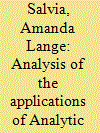

|
|
|
|
|
| Summary/Abstract |
In Brazil, the public lighting sector is a responsibility of the municipal government and typically represents around 4% of the electricity consumed by cities. Considering the significant importance and functions of this service, sustainable management is necessary. The aim of this paper is to investigate the main practices used worldwide in terms of energy efficiency of public lighting and propose the use of the multi-criteria method called Analytic Hierarchy Process to choose the best options for a group of Brazilian cities, namely Passo Fundo, Santa Maria and Porto Alegre. The methodology of this paper consists of searching for best practices in public lighting, which worked as alternatives for applying the Analytic Hierarchy Process. The final step consisted of presenting the impacts of a potential implementation, through analysis of energy and financial savings. The results suggest the preferred practices to each municipality (Audit and Guide Elaboration, Retrofit, Alternative Energy and Management) and their potential implementation can promote energy and financial savings up to 6 GWh/year and 600,000.00 US$/year. The main implications of this paper are related to proposing the use of a multi-criteria method to the public lighting sector and providing useful insights for local governments and especially for developing countries.
|
|
|
|
|
|
|
|
|
|
|
|
|
|
|
|
| 2 |
ID:
128377
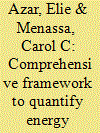

|
|
|
|
|
| Publication |
2014.
|
| Summary/Abstract |
While studies highlight the significant impact of actions performed by occupants and facility managers on building energy performance, current policies ignore the importance of human actions and the potential energy savings from a more efficient operation of building systems. This is mainly attributed to the lack of methods that evaluate non-technological drivers of energy use for large stocks of commercial buildings to support policy making efforts. Therefore, this study proposes a scientific approach to quantifying the energy savings potential due to improved operations of any stock of commercial buildings. The proposed framework combines energy modeling techniques, studies on human actions in buildings, and surveying and sampling methods. The contributions of this study to energy policy are significant as they reinforce the role of human actions in energy conservation, and support efforts to integrate operation-focused solutions in energy conservation policy frameworks. The framework's capabilities are illustrated in a case study performed on the stock of office buildings in the United States (US). Results indicate a potential 21 percent reduction in the current energy use levels of these buildings through realistic changes in current building operation patterns.
|
|
|
|
|
|
|
|
|
|
|
|
|
|
|
|
| 3 |
ID:
091273
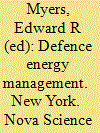

|
|
|
|
|
| Publication |
New York, Nova Science Publishers, 2009.
|
| Description |
ix, 164p.
|
| Standard Number |
9781606925744
|
|
|
|
|
|
|
|
|
|
|
|
Copies: C:1/I:0,R:0,Q:0
Circulation
| Accession# | Call# | Current Location | Status | Policy | Location |
| 054386 | 355.80687/MYE 054386 | Main | On Shelf | General | |
|
|
|
|
| 4 |
ID:
129915


|
|
|
| 5 |
ID:
132617
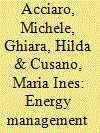

|
|
|
|
|
| Publication |
2014.
|
| Summary/Abstract |
Ports are characterised by the geographical concentration of high-energy demand and supply activities, because of their proximity to power generation facilities and metropolitan regions, and their functions as central hubs in the transport of raw materials. In the last decades the need to better understand and monitor energy-related activities taking place near or within the port has become more apparent as a consequence of the growing relevance of energy trades, public environmental awareness and a bigger industry focus on energy efficiency. The uptake in the port sector of innovative technologies, such as onshore power supply, or alternative fuels, such as LNG, and the increasing development of renewable energy installations in port areas, also calls for more attention to energy matters within port management.
So far, however, few port authorities have actively pursued energy management strategies. The necessity for port authorities to actively manage their energy flows stems from their efforts to plan, coordinate and facilitate the development of economic activities within the port, and as a consequence of the heavier weight that sustainability is given within the port management strategies.
Through the analysis of the experiences of two European ports, Hamburg and Genoa, that have already attempted to coordinate and rationalise their energy needs, this paper will argue that for the ports of the future active energy management can offer substantial efficiency gains, can contribute to the development of new alternative revenue sources and in the end, improve the competitive position of the port.
|
|
|
|
|
|
|
|
|
|
|
|
|
|
|
|
| 6 |
ID:
116954


|
|
|
|
|
| Publication |
2012.
|
| Summary/Abstract |
In order to reach the EU: s 20-20-20 primary energy savings target, energy efficiency needs to increase. Previous research on energy use and energy efficiency has focused mainly on the diffusion of energy efficient technologies. The discrepancy between optimal and actual implementation of energy efficient technologies has been illustrated in numerous articles and is often referred to as the energy efficiency gap. However, efficient technologies are not the only ways to increase energy efficiency. Empirical studies have found that a cost-effective way to improve energy efficiency is to combine investments in energy-efficient technologies with continuous energy management practices. By including energy management into an estimated energy efficiency potential this paper introduces an extended energy efficiency gap, mainly in manufacturing industries and the commercial sector. The inclusion of energy management components in future energy policy will play an important role if the energy savings targets for 2020, and later 2050, are to be met in the EU.
|
|
|
|
|
|
|
|
|
|
|
|
|
|
|
|
| 7 |
ID:
127194


|
|
|
|
|
| Publication |
2014.
|
| Summary/Abstract |
The recent push to develop unconventional sources of oil and gas both in the U.S. and abroad via hydraulic fracturing ("fracking") has generated a great deal of controversy. Effectively engaging stakeholders and setting appropriate policies requires insights into current public perceptions of this issue. Using a nationally representative U.S. sample (N=1061), we examine public perceptions of hydraulic fracturing including: "top of mind" associations; familiarity with the issue; levels of support/opposition; and predictors of such judgments. Similar to findings on other emerging technologies, our results suggest limited familiarity with the process and its potential impacts and considerable uncertainty about whether to support it. Multiple regression analysis (r2=.49) finds that women, those holding egalitarian worldviews, those who read newspapers more than once a week, those more familiar with hydraulic fracturing, and those who associate the process with environmental impacts are more likely to oppose fracking. In contrast, people more likely to support fracking tend to be older, hold a bachelor's degree or higher, politically conservative, watch TV news more than once a week, and associate the process with positive economic or energy supply outcomes. Based on these findings, we discuss recommendations for future research, risk communication, and energy policy.
|
|
|
|
|
|
|
|
|
|
|
|
|
|
|
|
| 8 |
ID:
118869
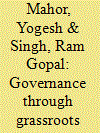

|
|
|
| 9 |
ID:
127865
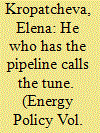

|
|
|
|
|
| Publication |
2014.
|
| Summary/Abstract |
Russian energy policy is usually considered in the regional context - in terms of its energy power capability and strength vis-à-vis the EU and the post-Soviet states. This study shows that in order to understand Russia's energy power, even in the regional context of its relations with the EU, it is necessary to consider the impact of international changes in the energy sector. The oil and gas shale "revolutions" represent such a global factor of influence. Even if their consequences are not yet clear, they have already become an important challenge for Russian energy policy and power. This policy-oriented article, guided by neoclassical realism, analyzes what the shale "revolutions" mean for Russia's energy policy and its power capabilities vis-à-vis the EU, how the Russian political elite perceive this development and how Russia reacts to it. In this context, Russian power capabilities look more moderate.
|
|
|
|
|
|
|
|
|
|
|
|
|
|
|
|
| 10 |
ID:
129923


|
|
|
| 11 |
ID:
104813


|
|
|
| 12 |
ID:
127878
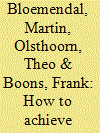

|
|
|
|
|
| Publication |
2014.
|
| Summary/Abstract |
A heat pump combined with Aquifer Thermal Energy Storage (ATES) has high potential in efficiently and sustainably providing thermal energy for space heating and cooling. This makes the subsurface, including its groundwater, of crucial importance for primary energy savings. The regulation of ATES systems is similar in many countries around the world. This paper seeks solutions for the institutional hindrances to the diffusion of ATES. The use of aquifers by individual ATES systems can be optimized to maximize their efficiency on the one hand, and to optimize the performance of the regional subsurface for energy storage on the other. The application of ATES in an aquifer has similar properties as other common resource pool problems. Only with detailed information and feedback about the actual subsurface status, a network of ATES systems can work towards an optimum for both the subsurface and buildings, instead of striving for a local optimum for individual buildings. Future governance of the subsurface may include the self-organization or self-governance. For that the ATES systems need a complementary framework; interpretation of interaction, feedback and adaptable and dynamic control interpretations are the key elements for the optimal and sustainable use of the subsurface.
|
|
|
|
|
|
|
|
|
|
|
|
|
|
|
|
| 13 |
ID:
176802


|
|
|
|
|
| Summary/Abstract |
An expanding body of research is defining drivers, benefits, and challenges of adopting ISO 50001 energy management systems. The Clean Energy Ministerial's Energy Management Leadership Awards program requires ISO 50001-certified organizations to develop case studies of their implementation experience. 72 recent case studies spanning multiple economic sectors provide a unique global look at implementation from certified organizations' perspectives. This dataset was investigated through content analysis of phrases related to motivations and goals, the role of management and the organization, benefits achieved, keys to success, and challenges. This paper presents findings from this quantitative analysis of “codes” assigned to phrases that capture their meaning. While organizations adopted ISO 50001 for different motives and saw myriad benefits beyond energy savings and associated greenhouse gas emissions reductions, commonalities exist. The most frequently identified drivers are existing values and goals, environmental sustainability, and government incentives or regulations. Findings also include: obtaining and sustaining top management support is critical; top benefits mentioned are cost savings, productivity, and operational improvements; and the primary barrier is lacking a culture of energy management. Policymakers and others looking to accelerate ISO 50001 uptake can use these findings to highlight benefits and incentives that will resonate with corporate decisionmakers worldwide.
|
|
|
|
|
|
|
|
|
|
|
|
|
|
|
|
| 14 |
ID:
117295


|
|
|
|
|
| Publication |
2013.
|
| Summary/Abstract |
Buildings are crucial to addressing energy problems because they are large consumers of end-use energy, and potential exists to dramatically improve their efficiencies. However, the pace of innovation in buildings is generally characterized as inadequate, despite the implementation of an array of policy instruments aimed at promoting efficiency. The literature on innovation in the building industry provides several explanations including: fragmented decision-making, principal agent problems, inadequate information, and limited learning across heterogeneous projects. We investigate the innovation process for buildings in the U.S. with a case study of patenting in energy management control systems (EMCS) for commercial buildings and programmable thermostats (PT) for residential buildings. Using U.S. patent data, we find that: (1) patenting activity peaked around 1980, subsequently declined, and then increased considerably in the past decade; (2) commercial, rather than residential, buildings account for the recent increase; and (3) building control technologies have benefitted from inventions originating outside the industry, notably from electronics and computers, with a shift toward the latter in recent years.
|
|
|
|
|
|
|
|
|
|
|
|
|
|
|
|
| 15 |
ID:
047397


|
|
|
|
|
| Publication |
Oklahoma, Penn Well Publishing Company, 2001.
|
| Description |
xx, 393p.
|
| Standard Number |
0878147942
|
|
|
|
|
|
|
|
|
|
|
|
Copies: C:1/I:0,R:0,Q:0
Circulation
| Accession# | Call# | Current Location | Status | Policy | Location |
| 047078 | 333.79/WEN 047078 | Main | On Shelf | General | |
|
|
|
|
| 16 |
ID:
127220
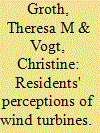

|
|
|
|
|
| Publication |
2014.
|
| Summary/Abstract |
Wind energy development has become a 'hot topic' across Michigan as this state seeks to achieve 10% of energy delivered to consumers from renewable sources (Huron County Planning Commission, 2005). The focus of this effort to generate renewable energy has centered around wind energy. Wind turbines have been constructed at numerous locations across the state. The lower peninsulas' eastern counties near Lake Huron and Saginaw Bay were designated by the Wind Energy Resource Zone board as one such area of strong sustained wind in the state. Turbines have been constructed in 'pockets' across this 'thumb' region, yet half a decade after the first turbines were constructed, negative perceptions are still attributed to wind turbines. This paper examines residents of wind farm locations as a whole and independently as groups (those in opposition and in support of development) to identify what, if any similarities and differences, exist between the residents' perceptions. Qualitative analysis on stated negative perceptions unveiled common issues with residents: increased price of electricity with wind energy, noise from the turbine rotation and uncertainty surrounding the long term effects of wind turbines. These areas of concern seem to persist years after construction was completed.
|
|
|
|
|
|
|
|
|
|
|
|
|
|
|
|
| 17 |
ID:
127874
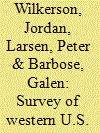

|
|
|
|
|
| Publication |
2014.
|
| Summary/Abstract |
We review long-term electric utility plans representing ~90% of generation within the Western U.S. and Canadian provinces. We address what utility planners assume about future growth of electricity demand and supply; what types of risk they consider in their long-term resource planning; and the consistency in which they report resource planning-related data. The region is anticipated to grow by 2% annually by 2020 - before Demand Side Management. About two-thirds of the utilities that provided an annual energy forecast also reported energy efficiency savings projections; in aggregate, they anticipate an average 6.4% reduction in energy and 8.6% reduction in peak demand by 2020. New natural gas-fired and renewable generation will replace retiring coal plants. Although some utilities anticipate new coal-fired plants, most are planning for steady growth in renewable generation over the next two decades. Most planned solar capacity will come online before 2020, with most wind expansion after 2020. Fuel mix is expected to remain ~55% of total generation. Planners consider a wide range of risks but focus on future demand, fuel prices, and the possibility of GHG regulations. Data collection and reporting inconsistencies within and across electric utility resource plans lead to recommendations on policies to address this issue.
|
|
|
|
|
|
|
|
|
|
|
|
|
|
|
|
| 18 |
ID:
162967
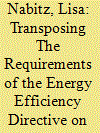

|
|
|
|
|
| Summary/Abstract |
Energy audits and energy management systems are recognized as important instruments to improve energy efficiency. By introducing Article 8 of its Energy Efficiency Directive (EED) the European Commission has made regular energy audits an obligation for large companies. Its transposition into national legislation by the EU-28 Member States (MS) results in different national implementations. The aim of this paper is to analyze differences and communalities in the national requirements and to derive good practice for policy makers from these. We structure the implementation process according to the theoretical concept of Policy Cycle Analysis and apply it as a heuristics from a multi-level governance perspective. The empirical analysis is based on a review of national implementation documents and 30 semi-structured interviews with stakeholders involved in the process of Article 8 EED. The transposition was delayed in more than half of the 28-EU MS. Our findings suggest that the interlinkages of the policy cycles are particularly important for a smooth policy process as MS partly interpreted the requirements differently. Further research on an updated, in-depth analysis of the correctness of the transposition as well as research on the impact of energy audits and energy management systems induced by the regulation is needed.
|
|
|
|
|
|
|
|
|
|
|
|
|
|
|
|
|
|
|
|
|